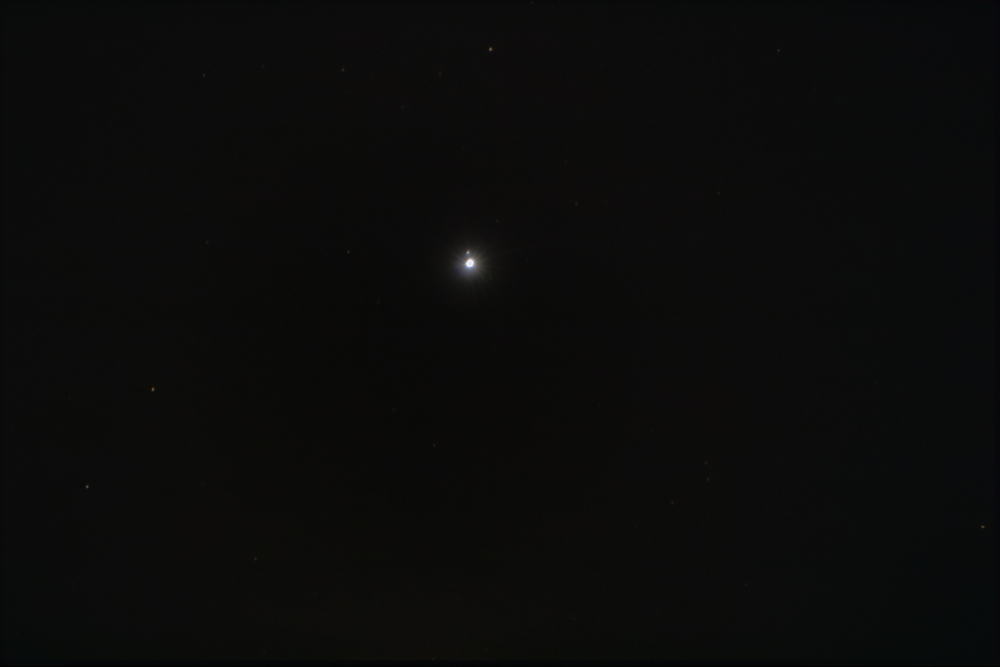
Double star in Ursa Minor
Amateur astronomers are very familiar with Polaris, the North Star, but many don't know that it is a double star. This may be because the second star is much dimmer at magnitude 9.1, and it can get lost in the glare of the much brighter component. However, if you look carefully through a medium-sized telescope, the second star is not hard to see.
There is a common belief that Polaris is the brightest star in the sky, but it is not even close. At magnitude 2.0, it is the 48th brightest. But it is an intrinsically large and bright star, a supergiant more than 5 times the mass of the Sun and 4000 times brighter. Even the smaller secondary star is about 1.4 times the mass of the Sun and many times brighter. The two components are about 2400 astronomical units apart (about 225 billion miles) and have an orbital period of several thousand years.
Right now Polaris is about 40' (2/3 degree) from the north celestial pole, and it will be gradually getting closer until the end of this century.
| Magnitudes | 2.0, 9.1 |
| Separation | 18.1" |
| Distance (light yrs) | 433 |
| Right Ascension | 2:54 |
| Declination | +89 20 |
| Field of View | 26' x 17' |
Image details: Five exposures each of 1/20, 1/10, 1/5, 1/2, 1, 2, and 4 seconds at ISO 12800, taken with a Canon T6i camera through a Meade 14” LX850 telescope at f/8.
March 2018